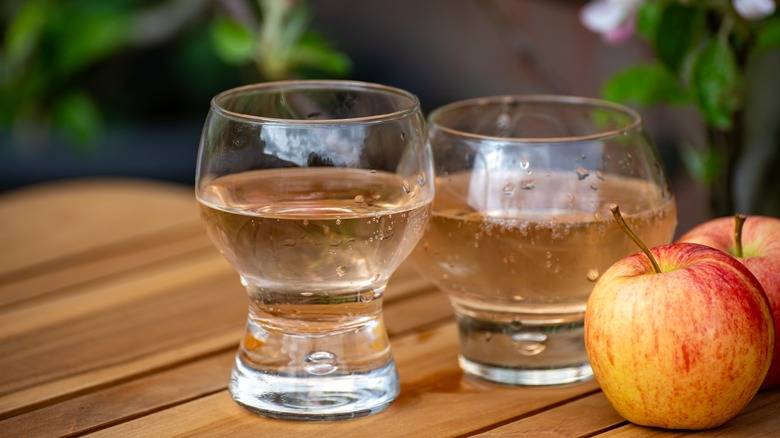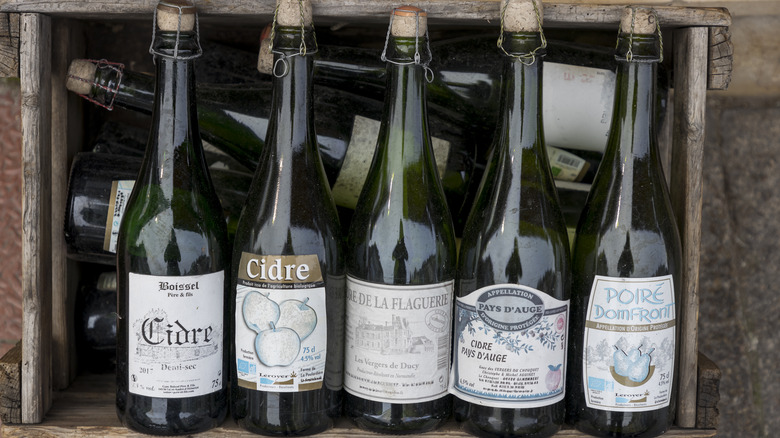How To Tell If A Hard Cider Is Sweet Or Dry (Even If The Label Doesn't Say)
One misconception that many people have about hard cider is thinking that it's always as sweet as the non-boozy apple cider you can find in the grocery store juice aisle. Richard Yi, who makes cider for Brooklyn Cider House at Twin Star Orchards in New Paltz, New York, spoke with Mashed about how to determine the sweetness level of a cider before opening the can or bottle. It turns out many options indeed are on the sweet side. Yi, a second-generation cider maker whose father Peter co-founded the cidery, tells us, "Typically, you should assume that most commercial ciders are sweet unless it says 'dry' on it."
Yi admits, "It is way more difficult to determine dryness in ciders than wine." Although his company tries to include descriptors on the labels such as "bone dry" or "kinda dry," even these labels can be somewhat subjective. Some ciders labeled as dry may still taste fairly sweet to many people's palates. Yi also notes that the word "crisp" does not mean that cider is dry, especially since this favorite foodie word seems to be something people like to throw around just to show that they're down with the lingo (no matter how vague their understanding may be). Another word, "keeved," refers to a specific cider-making technique involving a slow ferment time, but Yi adds that keeved ciders do tend to be sweeter.
Certain types of cider tend to be dry
Apart from looking for a cider that proclaims itself to be dry and avoids using the word "keeved," how can you ensure you're choosing a drier cider if this is your preference? Richard Yi says you may want to steer clear of some of the more popular hard cider brands that you'll find in the liquor store, since, in his opinion, "Artisanal ciders that are often in 750 [milliliter] bottles are more likely to be drier." He also says that the region or style of the cider is likely to influence the dryness or lack thereof. He characterizes Spanish ciders from the Basque and Asturian regions as "dry and a bit funky" and says these are his favorites, while he notes that British ones "tend to be off-dry but can be fully dry and have a bit more tannin."
French ciders can vary, with some being sweet and others dry to the point of bitterness. Among the latter are ciders from Cornouaille and La Vallée de la Rance in Brittany as well as Cotentin and Pays de Caux in Normandy. One interesting note about French ciders: They're commonly keeved, but the process does not seem to affect the sweetness of the final product. Many keeved French ciders are actually quite dry.

